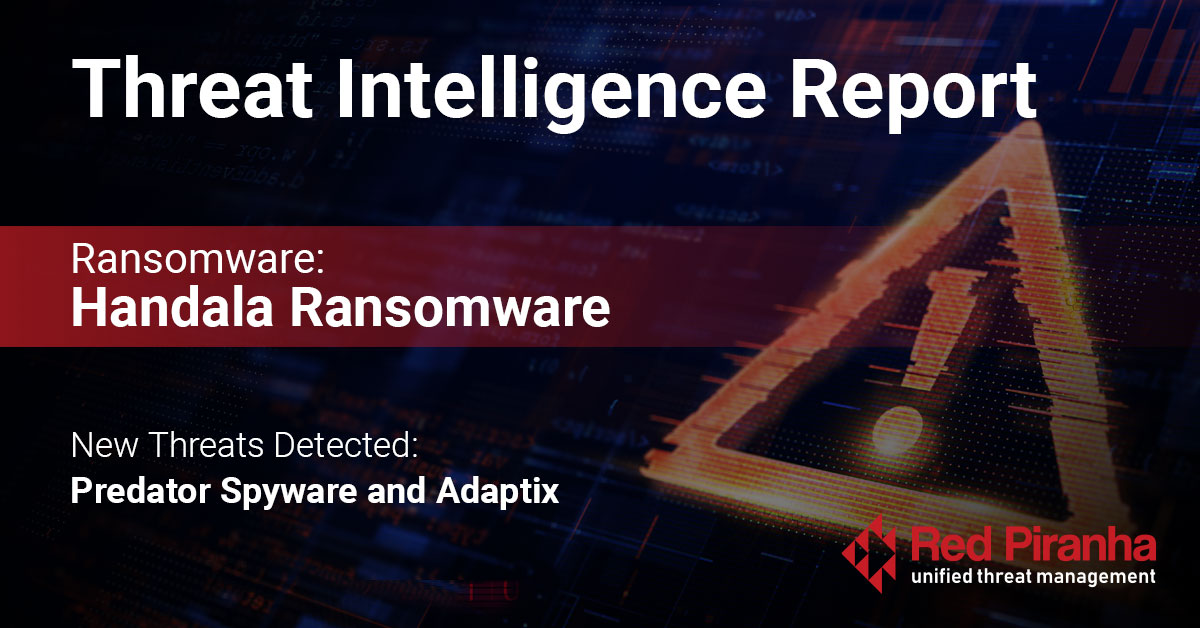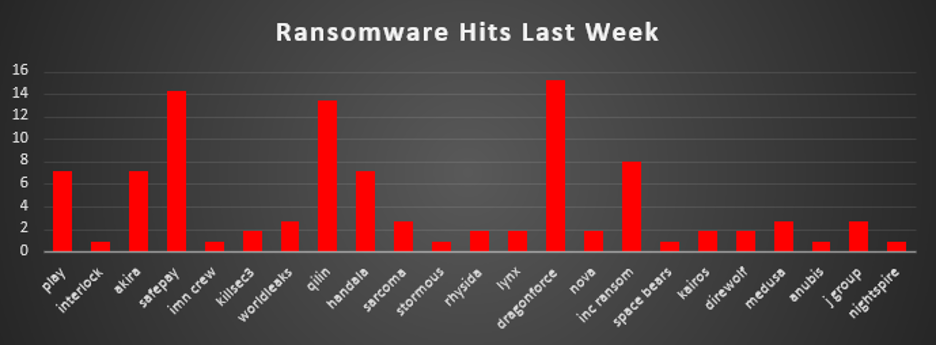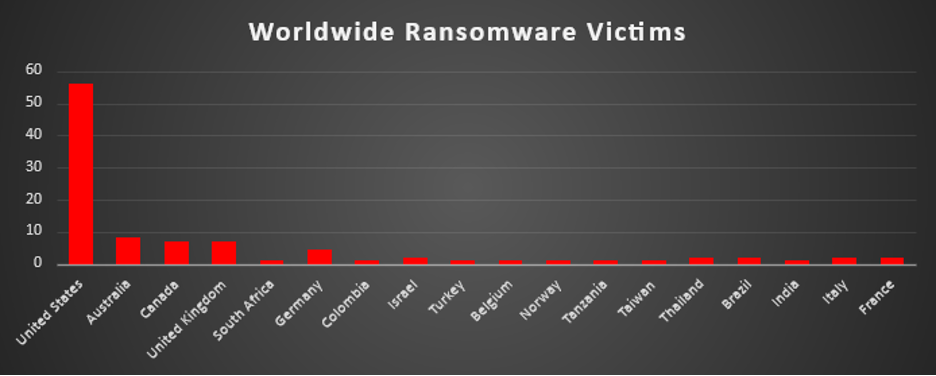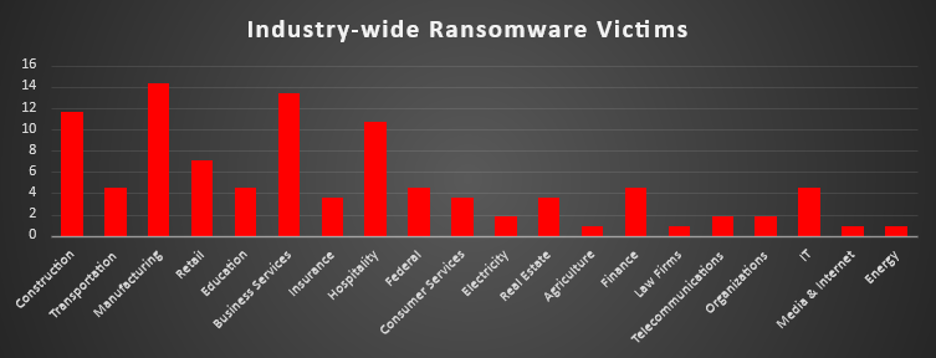
| New Threat Detection Added | 2 |
| • Predator Spyware • Adaptix |
|
| New Threat Protections | 153 |
Weekly Detected Threats
The following threats were added to Crystal Eye this week:
|
Threat name:
|
Predator Spyware | ||||||||||||||||||
|
Predator Spyware is developed by Intellexa (formally Cytrox), a company based in North Macedonia. This spyware has been used on politicians, businessmen, and journalists. The Predator has several features that make it a nightmare for anyone who’s a target. It has real-time monitoring capabilities, data collection for items such as call logs, messages, location data, and more. It also contains C2 capabilities which allows the attacker to force video and microphone usage.
Predator has a stealth mode to allow it to be very hard to detect and is cross-platform compatible. It is compatible with Android and iOS devices.
The spyware usually makes its way onto unsuspecting victims' devices through unpatched and zero-day vulnerabilities. Vulnerabilities in Google Chrome, Linux, and Android were used in the past.
|
|||||||||||||||||||
|
Threat Protected:
|
02 | ||||||||||||||||||
|
Rule Set Type:
|
|
||||||||||||||||||
|
Class Type:
|
Malware | ||||||||||||||||||
|
Kill Chain:
|
|
||||||||||||||||||
|
Threat name:
|
Adaptix | ||||||||||||||||||
|
Adaptix is an open-source C2 framework that is used for post-exploitation for pentesters. This tool is being used by Fog ransomware to maintain persistence on victims.
Adaptix contains features such as File and Process browser, Socks Proxy support, local and reverse port forwarding, and Cross-platform development, so it has agent support and monitoring support for Windows, Linux and MacOS. It also supports first and third-party plugins.
|
|||||||||||||||||||
|
Threat Protected:
|
02 | ||||||||||||||||||
|
Rule Set Type:
|
|
||||||||||||||||||
|
Class Type:
|
Trojan-activity | ||||||||||||||||||
|
Kill Chain:
|
|
||||||||||||||||||
Known Exploited Vulnerabilities (Week 3 - June 2025)
For more information, please visit the Red Piranha Forum:
https://forum.redpiranha.net/t/known-exploited-vulnerabilities-catalog-4th-week-of-june-2025/570
|
Vulnerability
|
CVSS
|
Description |
|
CVE-2023-0386
|
7.8 (High)
|
Linux Kernel contains a privilege escalation vulnerability within the OverlayFS subsystem that can allow a locally authenticated attacker to escalate privileges on the system.
|
|
CVE-2023-33538
|
8.8 (High)
|
Multiple TP-Link routers contain a vulnerability within the web management interface that can allow remote authenticated attackers to execute OS commands on the system via a specially crafted HTTP request. This vulnerability affects TP-Link TL-WR940N V2/V4, TL-WR841N V8/V10, TL-WR740N V1/V2 devices, and as these are end-of-life it's recommended to replace these products as they may no longer receive security fixes to address the issue.
|
|
CVE-2025-43200
|
4.8 (Medium)
|
Multiple Apple devices contain an unspecified vulnerability that occurs when processing a specially crafted photo or video when shared via an iCloud link.
|
Updated Malware Signatures (Week 3 - June 2025)
|
Threat
|
Description
|
|
|
zgRAT
|
A Remote Access Trojan (RAT) used in cyberattacks that provides attackers remote access to a machine. Commonly spread in malware loaders and through phishing emails.
|
| Ransomware Report | |
|
The Red Piranha Team conducts ongoing surveillance of the dark web and other channels to identify global organisations impacted by ransomware attacks. In the past week, our monitoring revealed multiple ransomware incidents across diverse threat groups, underscoring the persistent and widespread nature of these cyber risks. Presented below is a detailed breakdown of ransomware group activities during this period. Ransomware Victims – Weekly Overview DragonForce leads this week’s ransomware activity with 15.18% of total reported attacks, signalling a sharp surge and possibly indicating either the start of a new campaign or aggressive targeting of vulnerable sectors. SafePay follows closely at 14.29%, continuing its steady climb across recent weeks and reaffirming its position as a high-volume actor, likely due to either effective affiliate expansion or targeting under-defended enterprise environments. Qilin maintains a strong presence with 13.39%, remaining one of the most persistent threats with an international footprint and consistent hit rate, often leveraging advanced tactics and wide-reaching infrastructure. Akira, Play, and Handala each contributed 7.14%, marking them as active mid-tier operators this week. Their operations typically combine encryption with exfiltration, putting additional pressure on victims through double extortion. Inc Ransom accounted for 8.04%, continuing to be a disruptive force in ransomware circles with strategic data leak threats and targeted campaigns. Groups like WorldLeaks, Sarcoma, Medusa, and J Group each logged 2.68%, indicating steady, lower-volume campaigns likely targeting smaller enterprises or less-defended verticals. A wide cluster of groups, including Killsec3, Rhysida, Lynx, Nova, Kairos, Direwolf (all at 1.79%), and Interlock, IMN Crew, Stormous, Space Bears, Anubis, and NightSpire (all at 0.89%), represent the fragmented tail of the ransomware ecosystem. These actors often execute niche or opportunistic attacks, yet their presence contributes to the overall complexity and unpredictability of the ransomware threat landscape. |

Handala Ransomware
Description
Between 14 and 20 June 2025, the politically motivated Handala group deployed a hybrid ransomware-and-wiper toolkit in targeted “digital solidarity” attacks against Israeli infrastructure. Their malware operates in two phases:
- Wiper Phase: Immediately upon execution, the malware overwrites critical files with random data in small chunks—rendering them irrecoverable by conventional recovery tools. It also corrupts MBR/partition tables on key hosts to maximise disruption.
- Ransomware Phase: After the wiper routines are complete, any remaining files are encrypted with AES-256. Each victim is assigned a unique decryption key that Handala holds hostage. Victims see a desktop ransom note (READ_ME.txt) with:
- A unique victim ID
- Payment instructions (usually in cryptocurrency)
- Links to both clearnet and Tor sites where stolen data is or will be publicly leaked
By combining destructive wiping with strong encryption, Handala ensures that even if victims restore from backups, any files not recovered prior to wiping remain permanently lost. This dual approach amplifies operational downtime, pressures victims to pay, and fuels public embarrassment through data leaks.
Detailed TTPs
Spear-phishing Delivery (T1566.001)
Targeted emails impersonate IT/security teams, urging recipients to install a “critical security update.” An attached installer, when executed, initiates the attack without visible UI.
Stage-1 Loader Execution (T1059.005)
The installer drops an AutoIt-based loader that waits (30–90 s) to evade sandboxes, then quietly gathers system details (hostname, user, OS version).
Reconnaissance & Profiling (T1590, T1016)
The loader fetches the victim’s public IP and local network configuration, building a profile for tailored follow-on actions.
Configuration & C2 Setup (T1071.001)
A small config file from a clearnet portal provides:
- A Telegram Bot API endpoint for exfiltration
- A Tor hidden-service URL for payload download
Data Exfiltration over Telegram (T1041)
System profile and sample files are sent to the attacker’s Telegram channel, bypassing conventional defences.
Payload Download via Tor (T1071.001)
The loader retrieves the full wiper/encryptor payload from a .onion address, safeguarding hosting resilience and attacker anonymity.
In-Memory Deployment & Defence Evasion (T1218, T1140)
Using a trusted utility (e.g., certutil), the loader decodes and injects the payload into a legitimate process (such as svchost.exe), leaving minimal disk artefacts.
Disk Wipe & File Encryption (T1561, T1486)
- Wiper: Overwrites files in small random-data chunks, rendering them irrecoverable.
- Encryptor: Applies AES-256 encryption to remaining files, denying access and setting up for extortion.
Persistence via Scheduled Task (T1547.001)
A recurring task (every 15 minutes) ensures the loader re-launches automatically, surviving reboots or partial cleanup.
Ransom Note Deployment (T1486)
A “READ_ME.txt” note on the desktop contains a unique ID, payment instructions, and links to both clearnet and Tor leak sites hosting stolen data.
Detailed TTPs
|
Tactic
|
Technique (sub-technique)
|
ID
|
|
Initial Access
|
Spearphishing Attachment
|
T1566.001
|
|
Exploit Public-Facing App
|
T1190
|
|
|
Execution
|
AutoIt Scripting
|
T1059.005
|
|
Data Manipulation (file overwrite)
|
T1565.001
|
|
|
Persistence
|
Scheduled Task
|
T1547.001
|
|
Defence Evasion
|
Signed-Binary Proxy Execution (certutil, etc.)
|
T1218
|
|
Deobfuscate/Decode Files
|
T1140
|
|
|
Credential Access
|
Credentials from Config Files
|
T1555
|
|
Discovery
|
System Network Configuration Discovery
|
T1016
|
|
Collection
|
Archive Collected Data (7-Zip)
|
T1560.001
|
|
Command-and-Control
|
Application Layer Protocol (Telegram, Tor)
|
T1071.001
|
|
Exfiltration
|
Exfiltration Over C2 (Telegram API)
|
T1041
|
|
Impact
|
Data Encryption
|
T1486
|
|
Disk Wipe
|
T1561
|
Indicators of Compromise (IOCs)
Clearnet Leak Portals:
- handala-hack.to
- handala.cx
- handala.to
-
67.195.228.56
-
vmjfieomxhnfjba57sd6jjws2ogvowjgxhhfglsikqvvrnrajbmpxqqd.onion
-
t.me/Handala_Backup
-
Bot endpoints embedded in loader config
-
Tox ID: 02C75E60211314F4A69C323A3CE334D75C72CD8C742F3ED168447405C541DF057294365D6C1E
-
Twitter: twitter.com/Handala_Hack
-
https://t.me/Handala_hack
-
https://t.me/Handala_Channel
-
BreachForums: breachforums.cx/User-Handala
Sample Hashes:
- 6f79c0e0e1aab63c3aba0b781e0e46c95b5798b2d4f7b6ecac474b5c40b840ad
- 96dec6e07229201a02f538310815c695cf6147c548ff1c6a0def2fe38f3dcbc8
- Fe07dca68f288a4f6d7cbd34d79bb70bc309635876298d4fde33c25277e30bd2
Mitigation & Recommendations
- Deploy advanced email sandboxing; simulate spear-phishing exercises regularly.
- Rapidly remediate VPN and web-application vulnerabilities; enforce MFA on remote access.
- Monitor for scheduled task creation, unusual use of certutil/AutoIt, and in-memory injection behaviours.
- Alert on TOR and Telegram API traffic; block known leak-site domains and onion-to proxies.
- Implement a 3-2-1 strategy with immutable, offline snapshots to withstand wiper activity.
- Isolate critical assets; limit lateral movement protocols (e.g., SMB, RDP).
- Leverage CE 5.0 integrated threat intelligence feeds, automated IOC ingestion, and real-time wiper/ransomware detection to rapidly identify and contain Handala-style attacks.
By incorporating CE 5.0 alongside best practices for phishing defence, patching, EDR, network monitoring, backups, and segmentation, you’ll significantly enhance both your detection capabilities and your resilience against dual wiper-ransomware threats like Handala.
Ransomware Victims Worldwide
The United States remains the most targeted country this week, accounting for a dominant 42.94% of all reported ransomware victims. This overwhelming share highlights its expansive digital footprint, high-value targets, and continuous exploitation by both known and emerging ransomware operators.
Australia ranks second with 7.36%, underscoring increased activity in the Asia-Pacific region. Its reliance on cloud infrastructure and interconnected digital services makes it an appealing target.
Spain follows with 5.52%, reflecting persistent threat actor focus on Western Europe—particularly sectors such as retail, logistics, and manufacturing.
Canada and the United Kingdom also faced notable activity, recording 4.91% and 4.29%, respectively. These economies continue to attract ransomware due to their technological maturity and volume of critical business services.
Italy and Portugal posted 3.07% and 2.45%, while countries like India, Norway, and the United Arab Emirates each saw 1.84% of incidents, showing widespread distribution across regions including Europe, the Middle East, and South Asia.
A broad swath of countries—including Mexico, Brazil, Singapore, Venezuela, Austria, Turkey, Peru, South Africa, Germany, Poland, and France—each experienced 1.23% of the attacks. These mid-tier figures suggest that attackers are actively probing both mature and emerging economies.
Meanwhile, countries such as New Zealand, Czech Republic, Egypt, Kuwait, South Korea, Kenya, Denmark, Croatia, Chile, Ireland, Thailand, Greece, Netherlands, Switzerland, Mauritius, and Ukraine each registered 0.61% of ransomware incidents. This long-tail distribution illustrates the global reach of modern ransomware groups—no nation is off-limits, and even those with smaller digital footprints are frequently caught in opportunistic campaigns.

Industry-wide Ransomware Victims
Manufacturing remains the most heavily targeted industry this week, accounting for 14.29% of all reported ransomware incidents. Its complex infrastructure, operational dependencies, and often outdated systems make it a prime target for threat actors seeking to disrupt supply chains.
Business Services follows closely with 13.39%, as attackers continue to focus on consultancy, legal support, and third-party vendors that often serve as stepping stones into larger enterprise networks.
Construction and Hospitality sectors recorded 11.61% and 10.71%, respectively highlighting a surge in targeting of operational sectors with fragmented digital defences and high-value operational data.
Retail stands at 7.14%, likely driven by customer data-rich environments and seasonal transaction peaks that heighten extortion pressure.
A mid-tier cluster—Transportation, Education, Finance, Federal, and IT—each reported 4.46% of incidents. These sectors are routinely targeted due to their sensitive data, public dependencies, and reliance on always-available systems.
Insurance, Consumer Services, and Real Estate each accounted for 3.57%, showing consistent interest in sectors where financial data, contracts, and customer records are central.
Lower-volume attacks were reported in Electricity, Telecommunications, and Organisations (1.79% each), pointing to opportunistic targeting or sector-specific campaigns.
Smaller industry verticals—including Agriculture, Law Firms, Media & Internet, and Energy—each registered 0.89%, reminding us that no industry is immune, even if not a primary focus of widespread campaigns.

